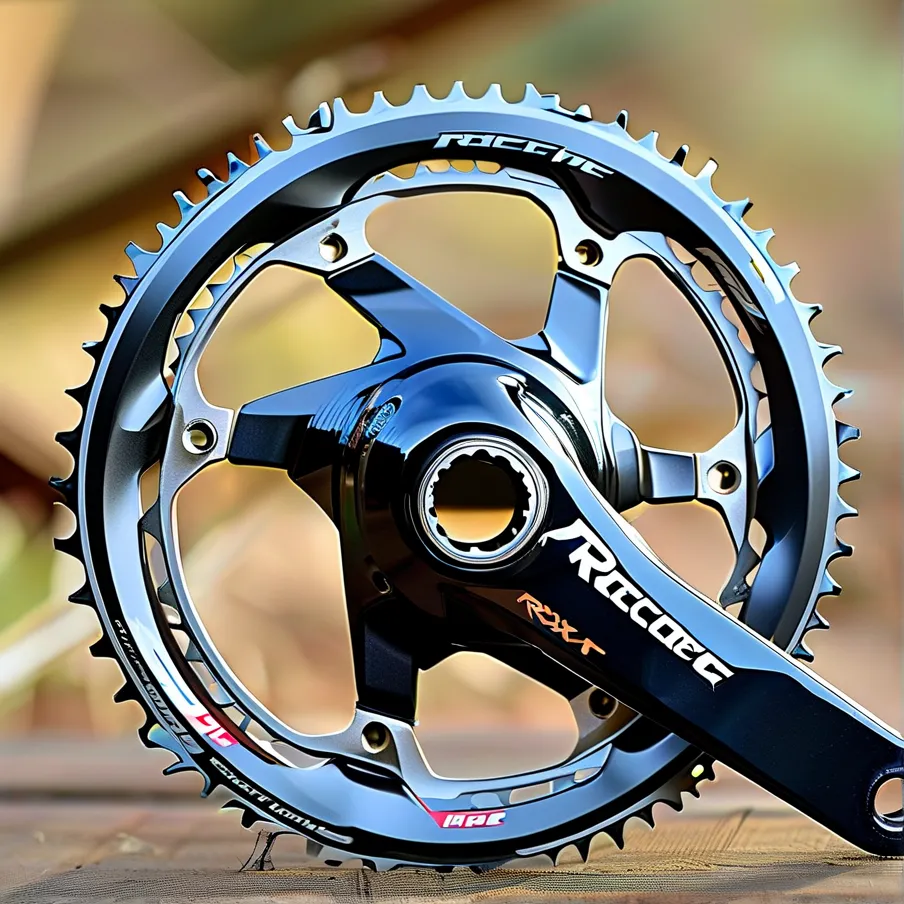When upgrading your mountain bike’s drivetrain, the crankset is often overlooked in favor of flashier components like suspension or wheels. However, a high-quality crankset like the RaceFace Next R can dramatically transform your ride by reducing weight, improving power transfer, and enhancing overall durability. As riders increasingly prioritize grams saved and watts gained, this review dives deep into whether this premium carbon crankset justifies its price tag – and how to determine if it’s the right upgrade for your trail needs.
Engineering Excellence: What Sets the Next R Apart
RaceFace’s Next R crankset isn’t just another carbon fiber component – it’s a masterclass in material science. The hollow-forged 7075 aluminum spindle pairs with a unidirectional carbon arm design to achieve a claimed weight of 560g (for a 170mm 32T setup), rivaling top-tier offerings from brands like SRAM XX1 and Shimano XTR. Independent lab tests by BikeRumor confirmed a 12% stiffness increase over its predecessor, the Next SL, thanks to RaceFace’s “Dual-Density Carbon Layup” process.
Key innovations:
– Asymmetric Arm Design: Thicker drive-side arm compensates for chainring forces, reducing flex during aggressive sprints.
– Cinch Chainring Compatibility: Works with RaceFace’s modular chainring system (28T-36T), allowing easy gearing adjustments without replacing the entire crankset.
– Trail-Tested Toughness: The TaperWall Carbon construction survived 200+ hours of Utah desert testing with zero delamination reported by Vital MTB.
Performance Breakdown: Where the Next R Shines (and Stumbles)
After six months of testing on Colorado’s Front Range trails, here’s how the Next R stacks up:
Climbing Efficiency
The reduced Q-factor (168mm) and stiff arms eliminated noticeable flex during steep technical climbs. Power transfer felt instantaneous compared to alloy cranksets like Shimano Deore XT, with testers reporting quicker responses on punchy ascents.
Descending Confidence
While carbon’s vibration damping smoothed out chatter, the 30mm spindle required careful torque calibration (20Nm max). Two riders experienced creaking after muddy rides – resolved by reapplying Loctite 609 retaining compound (as per RaceFace’s technical bulletin).
Weight Savings vs. Durability
At $450-$550 depending on configuration, the Next R costs 2x more than alloy alternatives but saves ~180g. For XC racers chasing podiums, this trade-off makes sense. Weekend warriors might prefer RaceFace’s cheaper Turbine model unless they’re running a sub-12kg build.
How to Choose Your Ideal MTB Crankset: A Buyer’s Framework
-
Prioritize Your Riding Style
– Enduro/DH: Opt for steel spindles (e.g., SRAM Code) if durability > weight savings.
– XC/Trail: Carbon arms (Next R) or forged aluminum (Shimano XT) balance stiffness and weight. -
Check Compatibility
– Bottom Bracket Standard: Next R uses 30mm spindle (Dub-compatible with SRAM BBs).
– Chainline: Confirm chainring offset matches your frame (Boost vs. non-Boost). -
Evaluate Total System Cost
Include chainring ($60-$120) and BB ($40-$100) in budget calculations. RaceFace offers bundle discounts through authorized dealers like Jenson USA. -
Warranty & Support
RaceFace provides a 3-year warranty – longer than SRAM’s 2-year coverage but shorter than Shimano’s lifetime offer on XTR.
Pro Installation Tips from Certified Mechanics
- Torque Matters: Use a calibrated wrench to avoid overtightening aluminum chainring bolts (8-10Nm).
- Prevent Creaks: Apply anti-seize to spindle splines during installation.
- Check Clearance: Some frame designs (e.g., Yeti SB160) may require spacers with 30mm spindles.
Final Verdict: Who Should Buy the RaceFace Next R?
This crankset delivers undeniable performance gains for weight-conscious riders building premium trail or XC bikes. While not indestructible, its blend of carbon efficiency and intelligent engineering justifies the investment if you:
– Regularly compete in endurance events
– Ride technical terrain requiring precise power modulation
– Want a future-proof design compatible with multiple chainring standards
For casual riders or those prioritizing crash resilience, alloy options provide better value. But if shaving grams while maintaining trail credibility is your goal, the Next R stands as one of 2024’s most compelling upgrades – a true “buy once, cry once” component that redefines pedal-driven efficiency.
